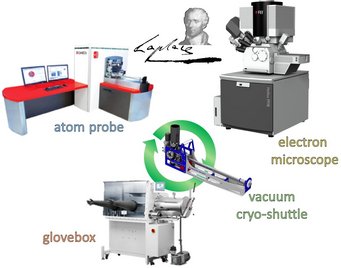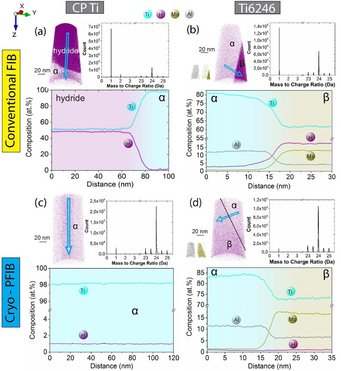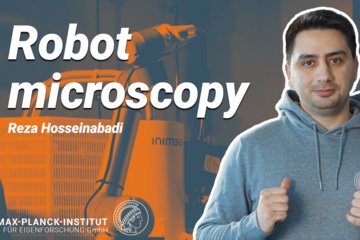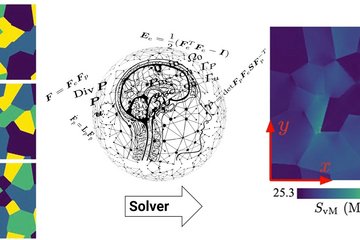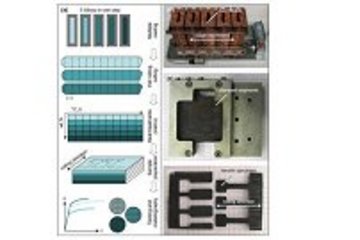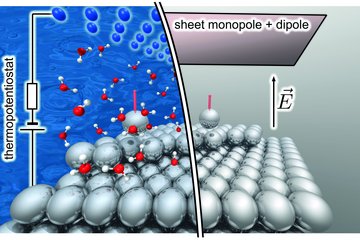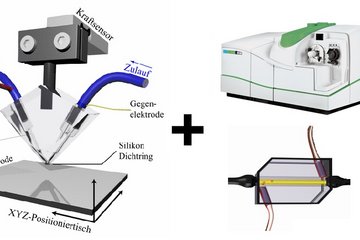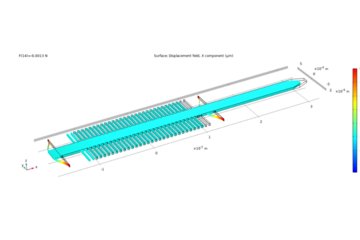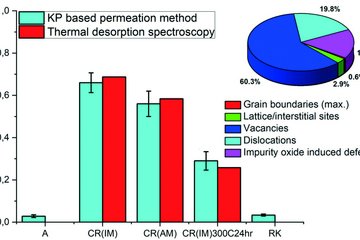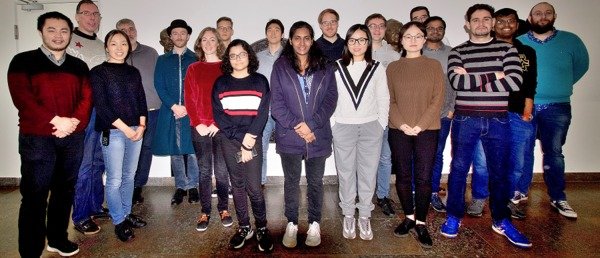
The LAPLACE Project: preparation and transfer of specimens for electron microscopy and atom probe tomography under ultra-high vacuum and cryogenic conditions
Operating as of May 2018 are four linked platforms; a N2-atmosphere glovebox, two state-of-the-art atom probes, and a scanning electron microscope / Xe-plasma focused ion beam equipped with a cryo-stage (funded by the federal ministry BMBF). This setup is summarised in Fig. 1 [1]. It will be complemented with a small reaction chamber to allow for gas charging and surface reactions induced directly on atom probe specimens, which is developed together with the Department of Interface Chemistry and Surface Engineering department and planned to be installed late 2018.
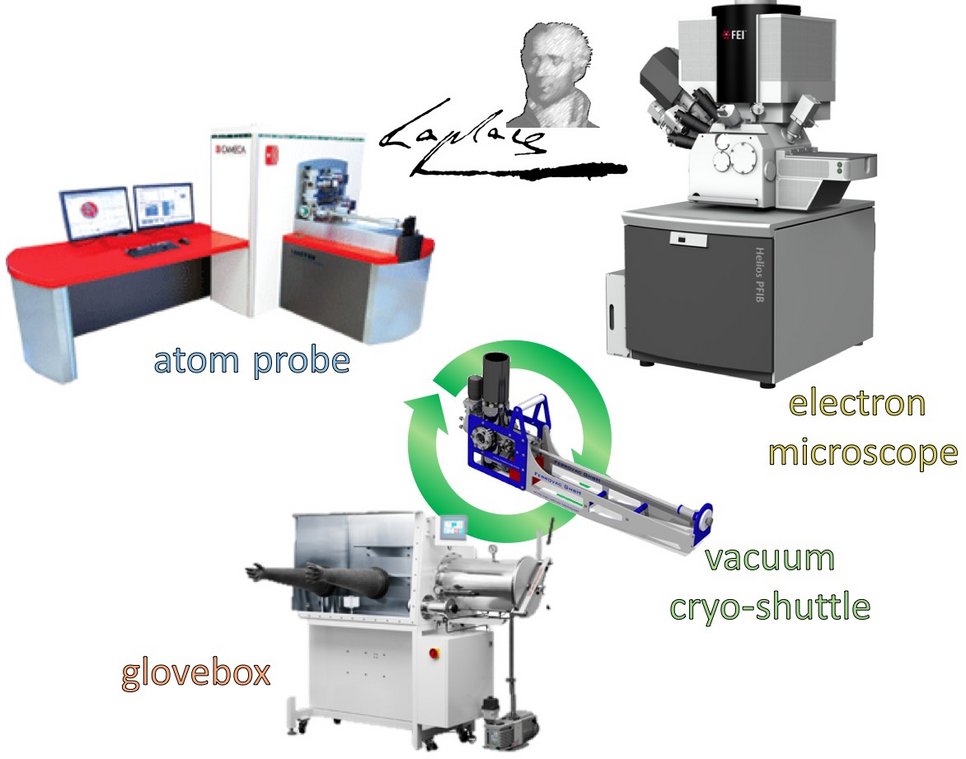
Fig. 1: the existing Laplace infrastructure at MPIE: a glovebox, a FEI dual beam scanning electron microscope – Xe-plasma focused ion beam and two Cameca local electrode atom probes connected through a cryo-ultra-high vacuum transport shuttle.
Up until now, the outcome of the UHV specimen transfer has allowed the analysis of environmentally-sensitive materials by atom probe tomography, as well as, through cryogenic preservation, specimens that have been specifically modified by chemical reactions at their surface, i.e. deuterium or hydrogen charging. We demonstrated the efficacy of the new protocols by the successful preparation and transfer of delicate samples. First, we prepared a series of specimens from commercially pure Mg and Ti, as well as specimens from a Ti-6Al-2Sn-4Zr-6Mo alloy. Mg is highly sensitive to oxidation and we demonstrated that a thin layer of surface oxide was formed in the high-vacuum chamber of the plasma focussed ion beam instrument [1]. Commercially pure Ti and Ti-alloys are prone to forming hydrides during preparation as shown in Fig. 2. Here, we showed how maintaining the specimen at low temperature during the final stages of sharpening of the needle-shaped specimen could alleviate this issue. The results from APT displayed in Fig.2 were also confirmed at a larger scale via transmission Kikuchi diffraction and transmission electron microscopy [2]. This result is critical for the success of the ERC-Consolidator project of B. Gault that aims to precisely measure the H-content in engineering materials to explain their failure in service.
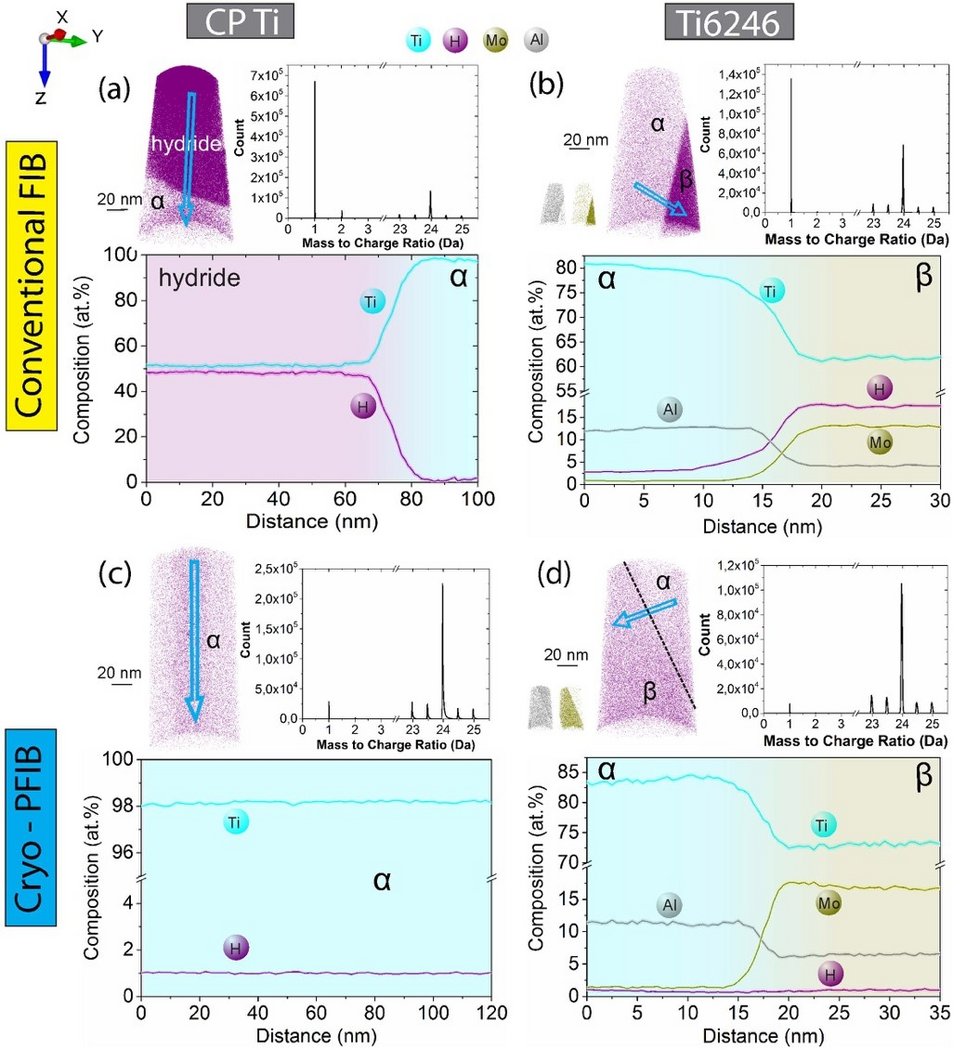
Fig. 2: H distribution map obtained from APT, mass spectrum and composition profile of (a) commercially-pure titanium and (b) a Ti-6Al-2Sn-4Zr-6Mo alloy from specimens prepared by conventional FIB at room temperature; (c)-(d) specimens from similar materials prepared by cryo-plasma focused-ion beam (at approx. -140°C).
Laplace project provides unique, state-of-the-art infrastructure for investigations in materials science and also allows for exploring new opportunities. We also demonstrated that the preparation and transfer of ice, which we hope will be an effective carrying medium for analysing suspensions and e.g. nanoparticles, and we recently successfully analysed proteins fibrils [3] involved in Alzheimer disease.
References:
[1] Stephenson, L.T. et al. : under review (2018), preprint: ARXiV: https://arxiv.org/abs/1805.10836.
[2] Chang, Y. et al.: in preparation (2018)
[3] Rustiska, K. et al.: under review (2018), preprint: https://www.biorxiv.org/content/early/2018/06/20/351973
